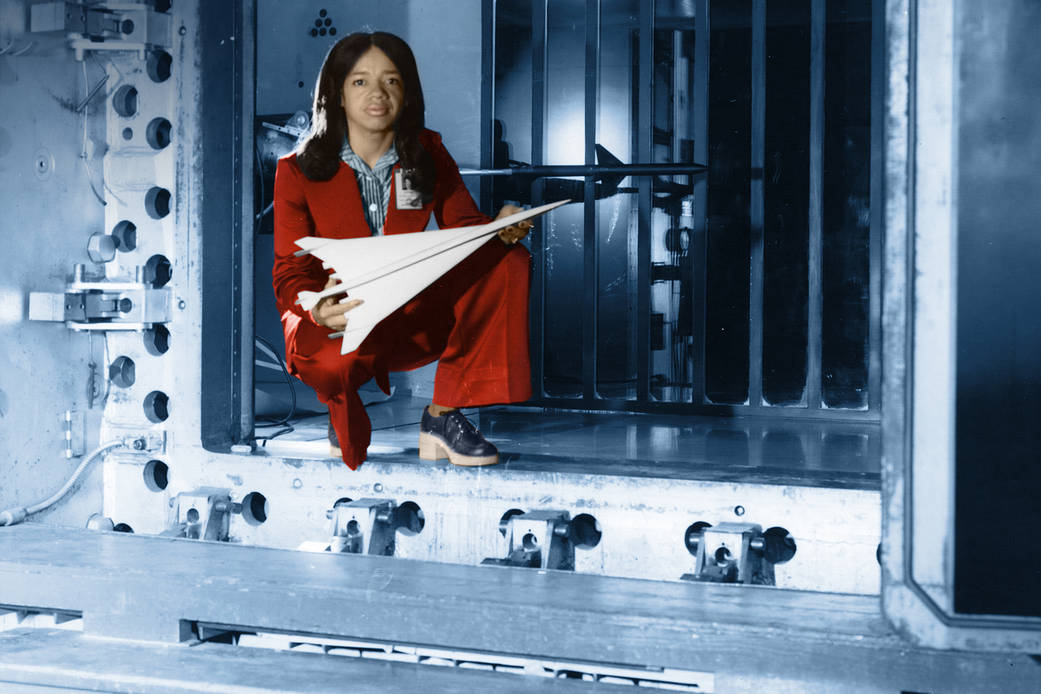In 1967, Christine Darden was added to the pool of ‘human computers’ who wrote complex programs and tediously crunched numbers for engineers at NASA’s Langley Research Center. But Darden wanted to do more than process the data — she wanted to create it.
After wading through daily calculations for eight years, Darden approached her supervisor to ask why men, with the same educational background as her (a master of science in applied mathematics), were being hired as engineers. Impressed by her skills, her supervisor transferred her to the engineering section, where she was one of few female aerospace engineers at NASA Langley during that time.
Her first assignment was to write a computer program for sonic boom. That program launched a 25-year career of working sonic boom minimization. Darden continued her education at George Washington University, and in 1983, she earned a doctorate degree in mechanical engineering.
During her 40-year career at NASA, she led an advisory team composed of representatives from industrial manufacturers and academic institutions, became the deputy program manager of The TU-144 Experiments Program, an element of NASA’s High Speed Research Program; and, in 1999, she was appointed as the director in the Program Management Office of the Aerospace Performing Center where she was responsible for Langley research in air traffic management and other aeronautics programs managed at other NASA Centers. Darden also served as technical consultant on numerous government and private projects, and she is the author of more than 50 publications in the field of high lift wing design in supersonic flow, flap design, sonic boom prediction, and sonic boom minimization.
Things certainly changed for Dr. Darden over the course of her career, as they have for women over the past 100 years. Other women before and after Dr. Darden have taken a chance to further their own equality. Food for thought as we honor the 99th anniversary of the adoption of the 19th Amendment giving women the right to vote.
#WomensEqualityDay
Image Credit: NASA
1967年,美国宇航局兰利研究中心(NASA Langley Research Center)的克里斯汀·达顿(Christine Darden)加入了“人类计算机”的行列,为工程师们编写复杂的程序,单调地计算数字。但是达顿想做的不仅仅是处理数据——她想创造数据。
八年来,达顿每天都在费力地计算,后来她找到导师,问为什么与她拥有相同教育背景的男性(应用数学硕士)被聘为工程师。她的技术给她留下了深刻的印象,她的上司把她调到了工程部门,在那段时间里,她是NASA兰利实验室为数不多的女性航天工程师之一。
她的第一个任务是为音爆编写一个计算机程序。该项目开启了她25年的将音爆最小化的工作生涯。达顿继续在乔治华盛顿大学学习,1983年,她获得了机械工程博士学位。
在NASA 40年的职业生涯中,她领导了一个由工业制造商和学术机构代表组成的顾问团队,成为NASA高速研究项目TU-144实验项目的副项目经理;1999年,她被任命为航空航天执行中心项目管理办公室主任,负责兰利航空交通管理研究和其他NASA中心管理的航空项目。达顿还担任过许多政府和私人项目的技术顾问,在超音速流、襟翼设计、音爆预测和音爆最小化等方面的高升力机翼设计领域发表了50多篇论文。
在达顿博士的职业生涯中,情况确实发生了变化,就像过去100年来女性的情况一样。在达顿博士之前和之后的其他女性都有机会促进自己的平等。我们在纪念通过赋予妇女投票权的第19项修正案99周年之际发表上述言论,这引人深思。
#WomensEqualityDay
影像来源: NASA







